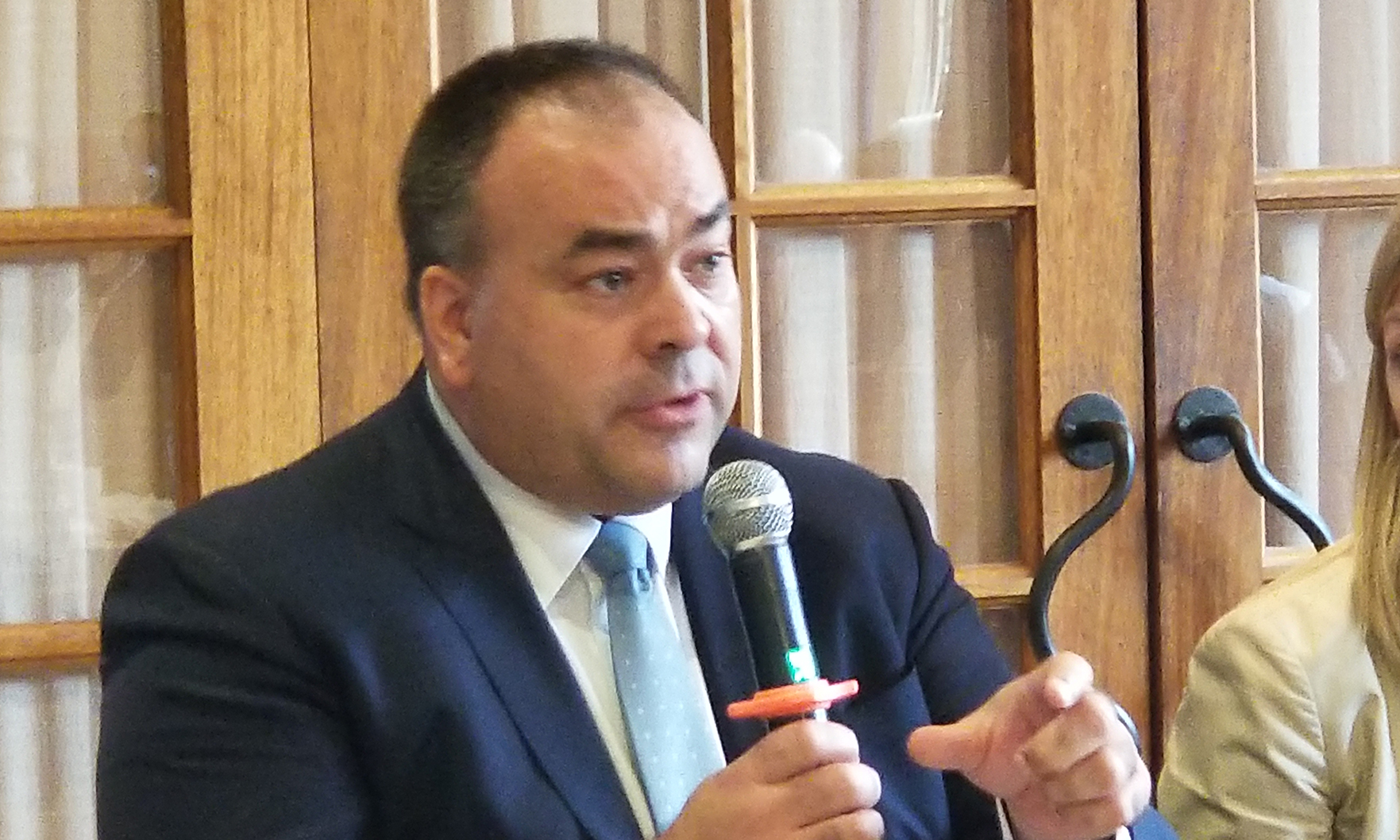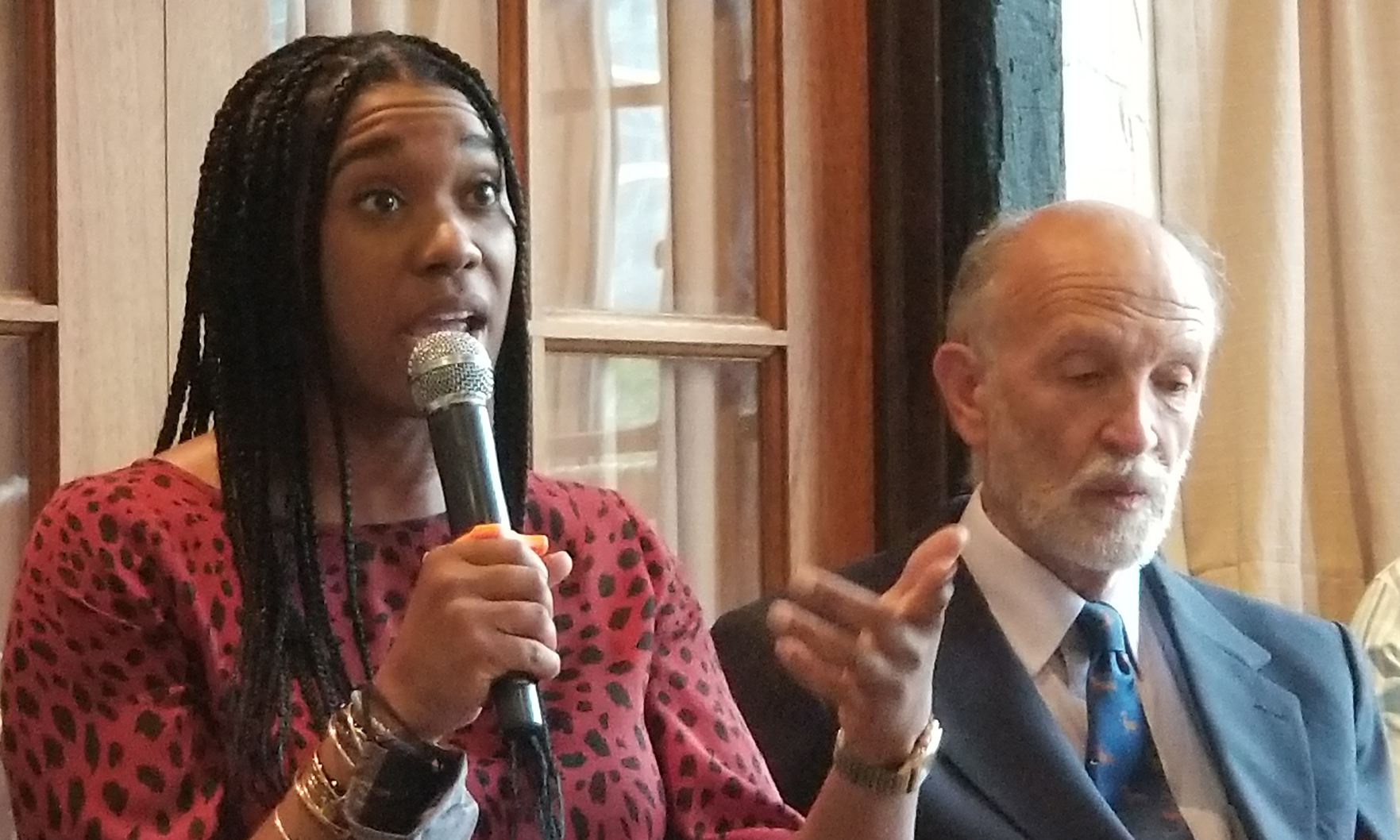
Cook County Assessor Fritz Kaegi addresses the Southside Builders Association at an Oct. 6 luncheon.
Getting assessments right is a challenging business, but new modeling methods and updated technology are helping to paint a more accurate picture of what homes and commercial buildings are worth, according to Cook County Assessor Fritz Kaegi.
Kaegi and top members of the Cook County Assessor’s office discussed the topic “Racial Inequities in Property Tax Assessments” at the October meeting of the Southside Builders Association.
Kaegi pointed to research by Christopher Berry, a professor at the Center for Municipal Finance at the University of Chicago Harris School of Public Policy, showing that across the nation, the real estate tax burden falls more heavily on lower-income homeowners. It’s a problem that goes beyond statistical modeling, according to Kaegi.
“So you need a modeling evaluation technique that is more sensitive to location and the unique circumstances of our very diverse human and urban landscape, so that’s what we can do in modeling,” he said.
Kaegi added that there are many unknowns, however, beyond the scope of statistical models that are used to assess a home’s value. A lack of information about the condition of the home can lead to a regressive evaluation of the value.
“Higher-end homes with the tricked out Martha Stewart kitchen and the basement basketball court and all this other stuff that adds value, that’s hard for us to see,” Kaegi said. “That can lead to under assessment, but the fixer-upper that hasn’t been addressed for 100 years, has issues with mold or deteriorating conditions or other things that we’re not measuring that can lead to over assessment of those.”

Samantha Simpson, chief data officer at the Cook County Assessor’s Office, addresses the Southside Builders Association at an Oct. 6 luncheon.
Samantha Simpson, chief data officer at the Assessor’s Office, said that upon taking office, the incoming staff began working to update the technology used to determine the assessments. “We noticed that a lot of things were very outdated,” she said, noting that most of the work was being done in basic spreadsheets.
“You have clients and customers that are using Google and Zillow, and everything is at their fingertips, so it was really important to us not only to mirror the market in what the value of homes look like, but also, technically, so we could see what was going on,” Simpson said. “That meant moving from spreadsheets and from what the office was initially using, which was a linear model and didn’t give really a dynamic information about what’s happening with home values.”
Kaegi said the new processes put into place have successfully reduced that so-called regressivity by half, but there’s still work to be done. He told the association members that the federal government can play a big role in helping to further improve those assessments by releasing data from the Uniform Appraisal Database used by Fannie Mae and Freddie Mac in determining which loans to back.
“The federal government has a really important role to play in a couple of different respects on this,” Kaegi said, noting that opening the Uniform Appraisal Database is a first step toward better understanding inequities in the appraisal system.
He also called on federal regulators to enforce mortgage-lending rules on non-banking entities engaged in home loans. “How good is our federal mortgage infrastructure in making sure that these appraisals are being done in an unbiased way?” he asked.